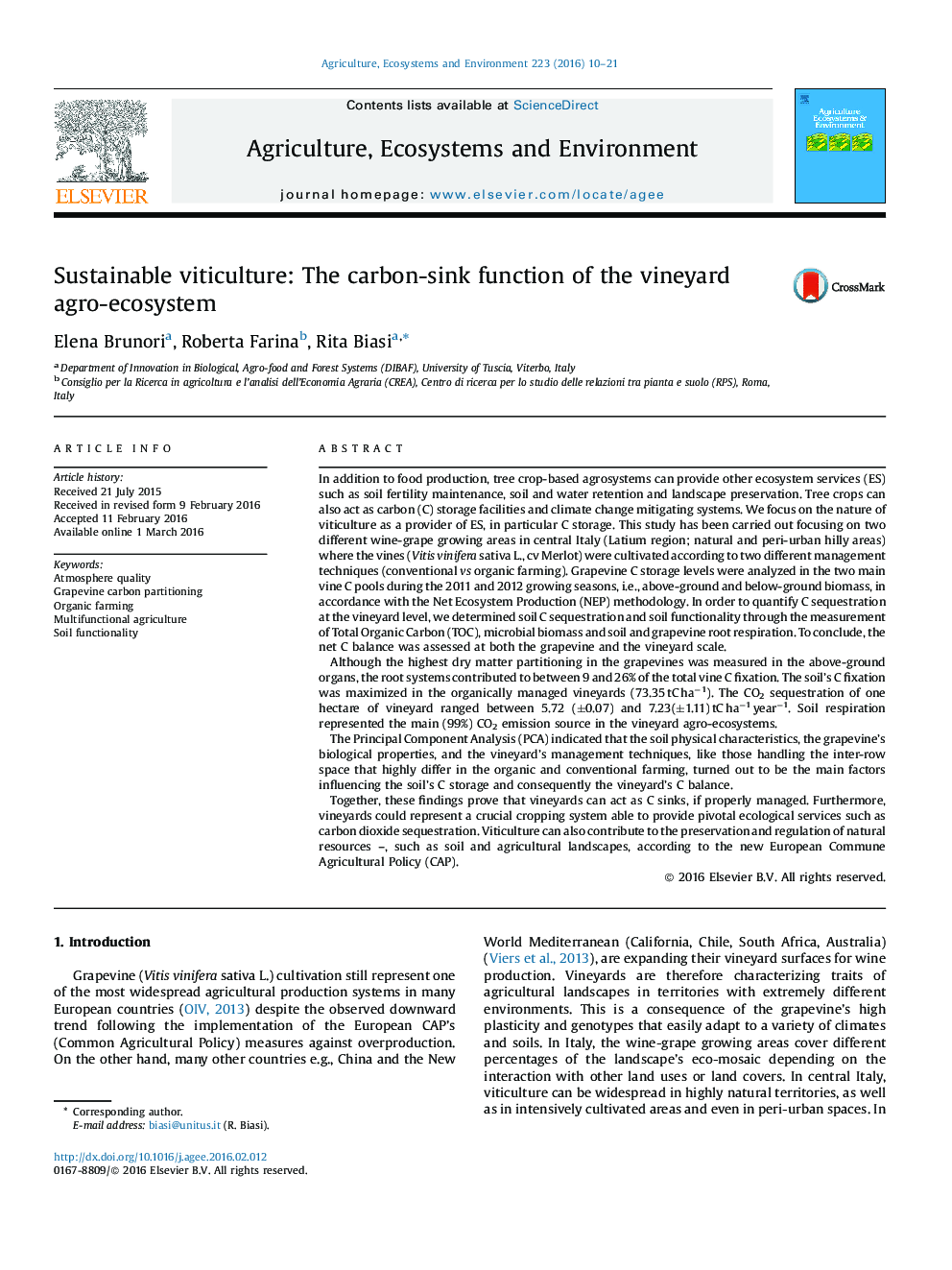| کد مقاله | کد نشریه | سال انتشار | مقاله انگلیسی | نسخه تمام متن |
|---|---|---|---|---|
| 2413479 | 1552029 | 2016 | 12 صفحه PDF | دانلود رایگان |
• The carbon sink function of the vineyard agro-ecosystem was measured.
• C fixation was assessed in relation to environmental and agronomical management.
• The root system’s contribution to total C storage ranged from 9% to 26%.
• The highest level of soil organic C was found in the organic vineyard.
• Total C storage in the vineyard ranged from 5.7 to 7.2 tC ha−1 year−1.
In addition to food production, tree crop-based agrosystems can provide other ecosystem services (ES) such as soil fertility maintenance, soil and water retention and landscape preservation. Tree crops can also act as carbon (C) storage facilities and climate change mitigating systems. We focus on the nature of viticulture as a provider of ES, in particular C storage. This study has been carried out focusing on two different wine-grape growing areas in central Italy (Latium region; natural and peri-urban hilly areas) where the vines (Vitis vinifera sativa L., cv Merlot) were cultivated according to two different management techniques (conventional vs organic farming). Grapevine C storage levels were analyzed in the two main vine C pools during the 2011 and 2012 growing seasons, i.e., above-ground and below-ground biomass, in accordance with the Net Ecosystem Production (NEP) methodology. In order to quantify C sequestration at the vineyard level, we determined soil C sequestration and soil functionality through the measurement of Total Organic Carbon (TOC), microbial biomass and soil and grapevine root respiration. To conclude, the net C balance was assessed at both the grapevine and the vineyard scale.Although the highest dry matter partitioning in the grapevines was measured in the above-ground organs, the root systems contributed to between 9 and 26% of the total vine C fixation. The soil’s C fixation was maximized in the organically managed vineyards (73.35 tC ha−1). The CO2 sequestration of one hectare of vineyard ranged between 5.72 (±0.07) and 7.23(±1.11) tC ha−1 year−1. Soil respiration represented the main (99%) CO2 emission source in the vineyard agro-ecosystems.The Principal Component Analysis (PCA) indicated that the soil physical characteristics, the grapevine’s biological properties, and the vineyard’s management techniques, like those handling the inter-row space that highly differ in the organic and conventional farming, turned out to be the main factors influencing the soil’s C storage and consequently the vineyard’s C balance.Together, these findings prove that vineyards can act as C sinks, if properly managed. Furthermore, vineyards could represent a crucial cropping system able to provide pivotal ecological services such as carbon dioxide sequestration. Viticulture can also contribute to the preservation and regulation of natural resources –, such as soil and agricultural landscapes, according to the new European Commune Agricultural Policy (CAP).
Journal: Agriculture, Ecosystems & Environment - Volume 223, 1 May 2016, Pages 10–21
